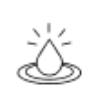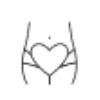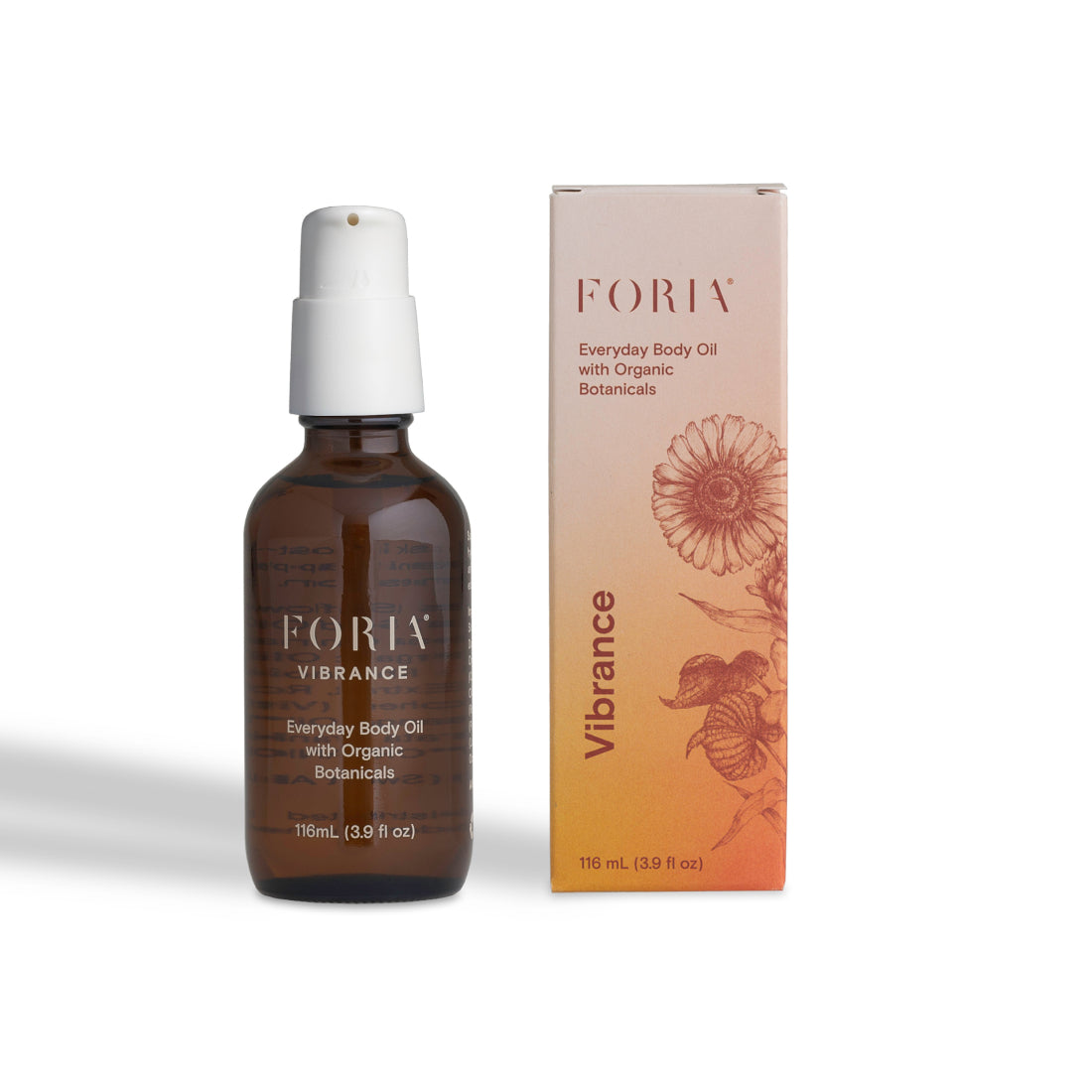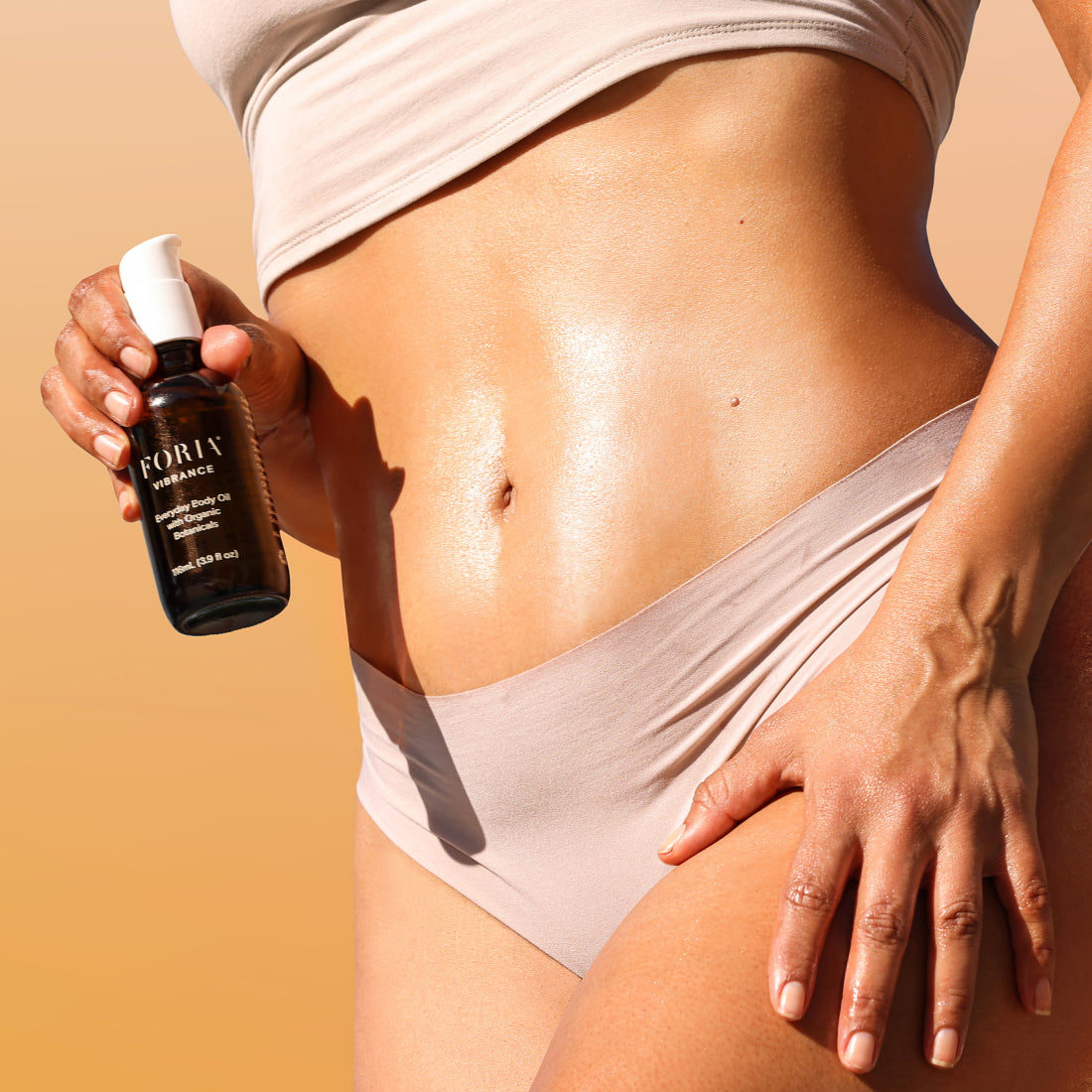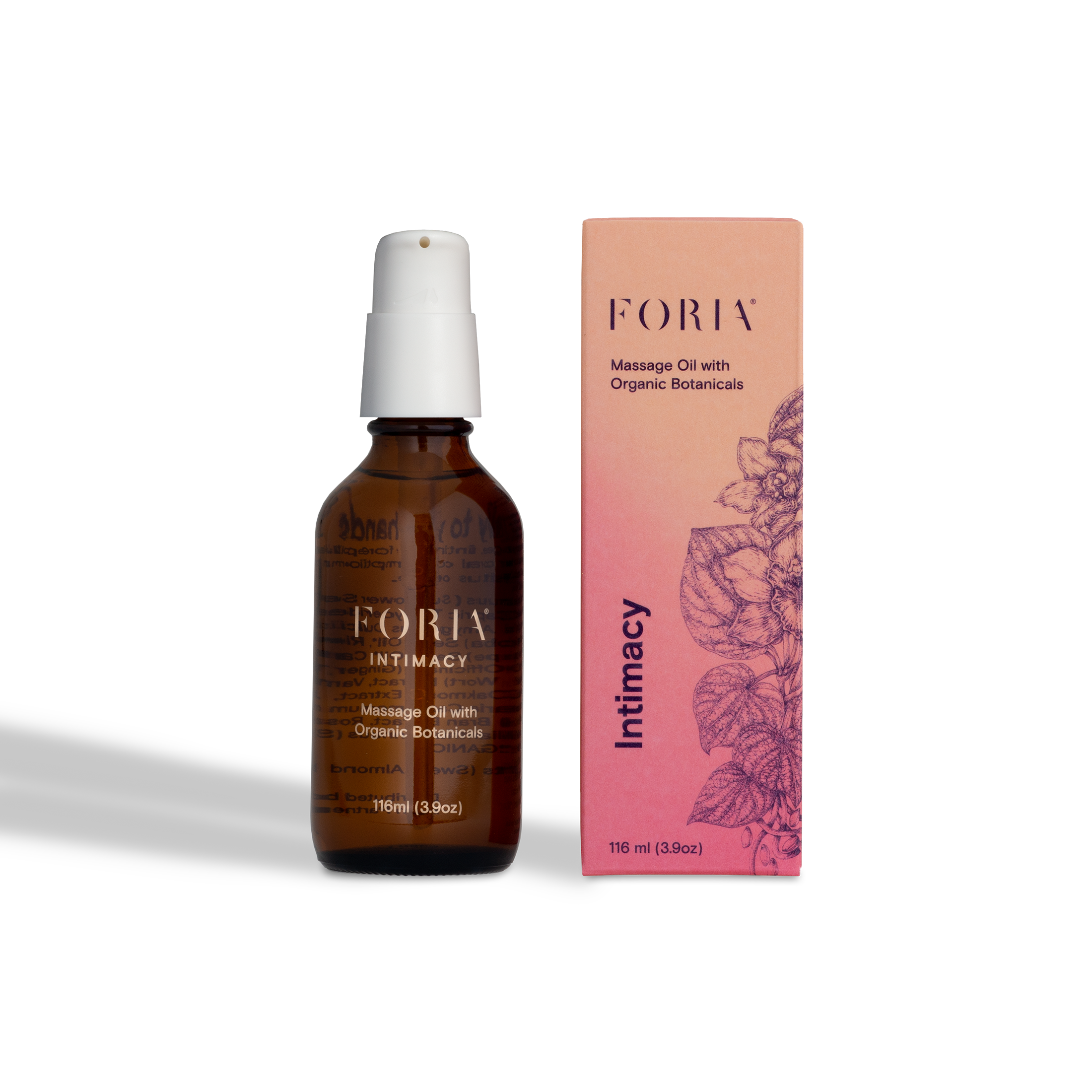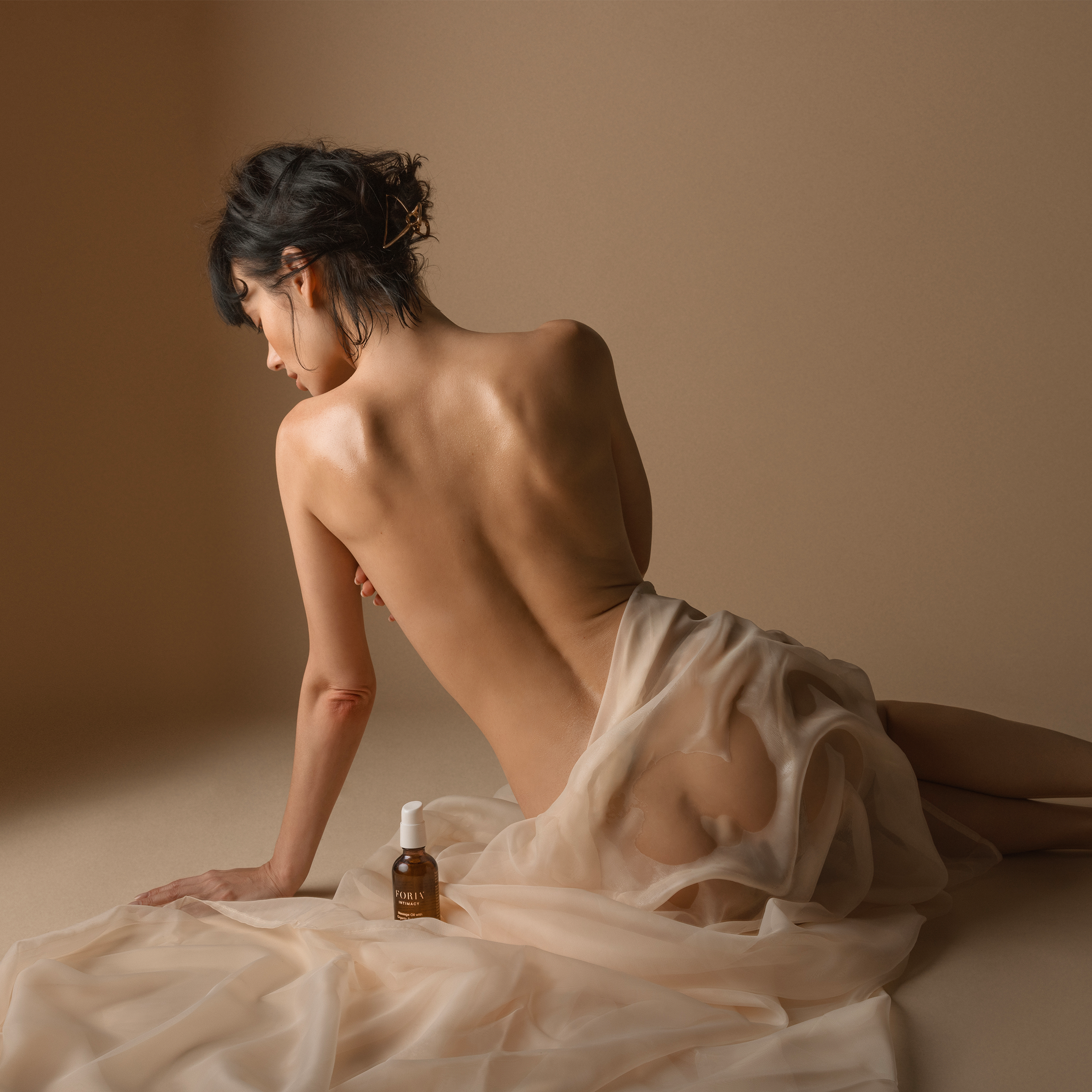Self-massage is an invitation to love ourselves well.
When we touch ourselves with care and intention, we give ourselves a wonderfully layered gift: we not only offer support to our physical bodies by easing our sore and tight muscles, moving lymph through our tissues and keeping our skin deliciously hydrated, but we also give ourselves necessary support for reducing stress, and we cultivate our awareness and acceptance of our glorious bodies exactly as they are.
Watch our Breast Massage Tutorial Here
Self-massage on more high-charge or taboo parts of our bodies can deepen those gifts exponentially. When we lovingly touch the places we may tend to avoid because of past negative experiences – where perhaps we have received unwanted attention, or have sustained trauma, including intentional surgery – we have an opportunity to integrate those experiences at our own pace, reclaiming our embodiment and our energy on our own terms. We have the ability to fundamentally transform our bodies, expand our emotional capacity, and nourish our connection with ourselves in lasting and often surprising ways through self-touch after any form of trauma.
Because the breasts and chest are sensitive and often sexualized parts of our bodies, this is a part of our bodies that may feel disconnected or uncomfortable. Many of us have scars here, whether from gender-affirming surgery, breast augmentation or reduction, or from lifesaving medical interventions such as lumpectomies and mastectomies. Massaging our breasts and chests is a wonderful practice of re-integrating and reclaiming this part of ourselves, allowing us to breathe more fully and feel more whole.
It is also, of course, important to touch our breasts and chests with attention and regularity so that we can feel changes in the tissues over time, and seek further information from care providers as needed. Each of us is the ultimate authority over our body, and our intentional, ongoing knowledge of ourselves is a cornerstone of solid self-care. If you notice something that concerns you, it’s a part of your excellent self-care to ask for support as needed. Information is power!
Absolutely anyone can do breast and chest self-massage. It requires very little preparation, and the rewards are immediate and profound. It is a practice suitable for anyone irrespective of sex or gender, and is particularly recommended for anyone who:
- has scar tissue on this part of their body for any reason,
- has a tendency toward dense, fibrotic or cystic tissue, or has a family history of these issues,
- has breast- or chest-fed, or who plans to in the future,
- feels somatically disconnected from this part of their body
- wants the experience of feeling more connected with their breath and their heart.
*Please consult with your care provider if you have an active cancer diagnosis, as some forms of self-massage may be contraindicated for you at this time. As well, if your scars are less than 6 weeks old, please consult with a care provider before doing self-massage on or near them – you want scars to be fully healed before working with the tissue.
The most important thing to remember when doing breast and chest massage – as with all self-massage! – is that we are always exploring in layers, beginning with broad, gentle touch and only working more deeply when our bodies feel ready. Pleasurable sensations are our surest compass that we’re doing it right – it should feel good!
Begin by warming the oil in the palms of your hands and applying it to the skin of your chest and breasts. Make sure that you don’t forget the sides and underneath curves and seams of your breasts, the area around your collarbones, and your neck and throat - armpits are fair game, too. Pay attention as you do this to how your tissues feel to you, and if anything draws your attention – you are making a new, updated somatic map of your body every time you visit with yourself in this way.
Using the pads of your fingers and thumbs as well as the palms of your hands, and working at the pace and the amount of pressure that feels the nicest to you, begin to stroke across your chest from the outer edge of your opposite shoulder towards your heart, along the underside of your collarbone and then down over your breastbone. Spend a minute or two doing this on both sides to warm the tissues and prime the delicate lymphatic structures that are just under the surface of your skin here.
Then, again working across your body, begin to massage in large and small circles all the way around your nipples with just the right amount of pressure and speed for you, making sure to make contact with all of the tissue, bringing warmth and gentle movement. Again, notice all of the sensations that are present as you feel these tissues – you are always adding to your current somatic map! If you have any scars, notice how the area around the scar may feel different than other places you touch – it may have a different temperature, texture, or nerve sensitivity than other parts of you, and all of this can change with self-massage. Make sure that you spend just as much time on one side as you do on the other.
Next, you can begin to work from the periphery of your chest or breast area toward the nipple, either pressing with your fingerpads or, if you have enough tissue here, with a broad squeezing motion between fingers and thumbs. Notice any sensations that draw your attention here, any areas that feel more or less dense or sticky, and if you feel any bumps or lumps.
If you have breasts, give some attention to the seam of the underside of your breast – your “underboob” – as this is a place where the tissue can become very congested from daily compression under a bra, or just from the weight of the breast tissue. Working along the seam lengthwise as well as cross-fibering across it is a wonderful way to move the congestion and open up the soft tissues as well as the rib cage beneath it – take some deep breaths here!
If you have fully healed scars, working lengthwise along the scar as well as cross-fibering across it with just the right amount of fingerpad pressure can, over time, change the consistency and texture of the scar tissue a great deal. It is a wonderful way to keep the tissues soft and spacious and the lymph moving freely. If you have top surgery scars that span the front of your chest, working with them regularly in this way (along with stretching the muscles and fascia around the scars) can be an important piece of maintaining the range of expansion of your ribcage with a full breath.
Lastly, sweep several times on both sides with broad, gentle palm and fingerpad pressure from your armpits across your chest to your breastbone.
To close, take a few delicious breaths with your hands over your heart.
Hooray! You did it! You may notice that the tissues are softer, warmer, have more sensation, and that your skin may have flushed or “pinked up” a little bit – all of that is the result of increased circulation, and the blush of feeling loved.
You can do this any time of day that suits you, and as often as every day if you’re feeling it! It’s a lovely thing to add to the end of a shower or a bath, and is a yummy way to calm your system in preparation for sleep.
We love to love you, and are so delighted to support you in loving yourself.
XO
Recommended Products
Want more? Sign up for our newsletter
By entering your email, you are agreeing to our terms and conditions and understand our privacy policy.


